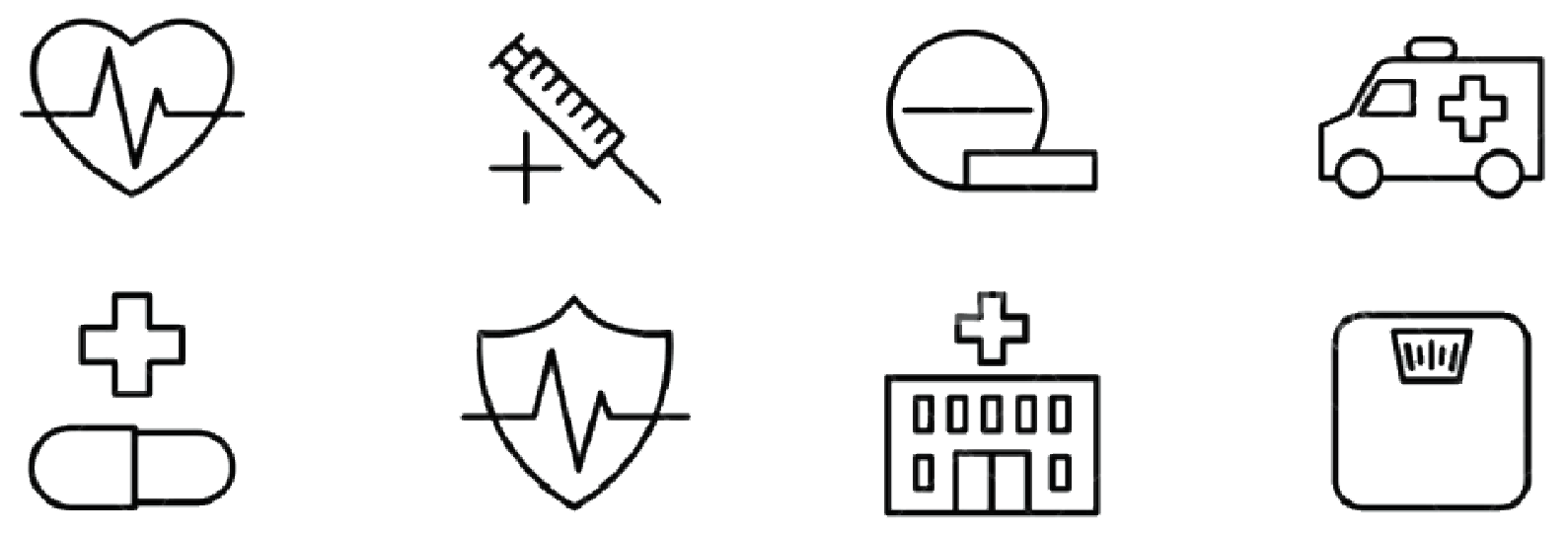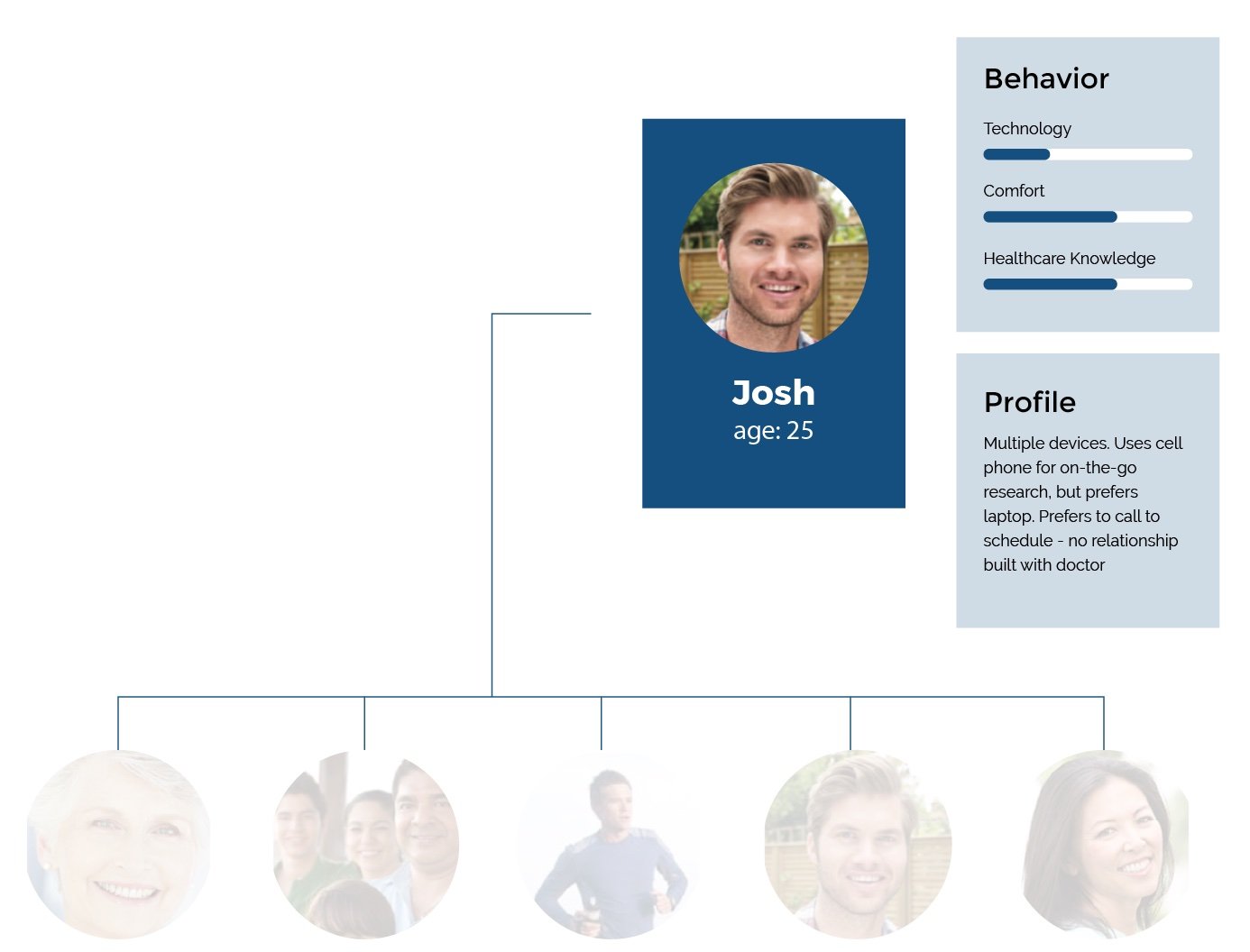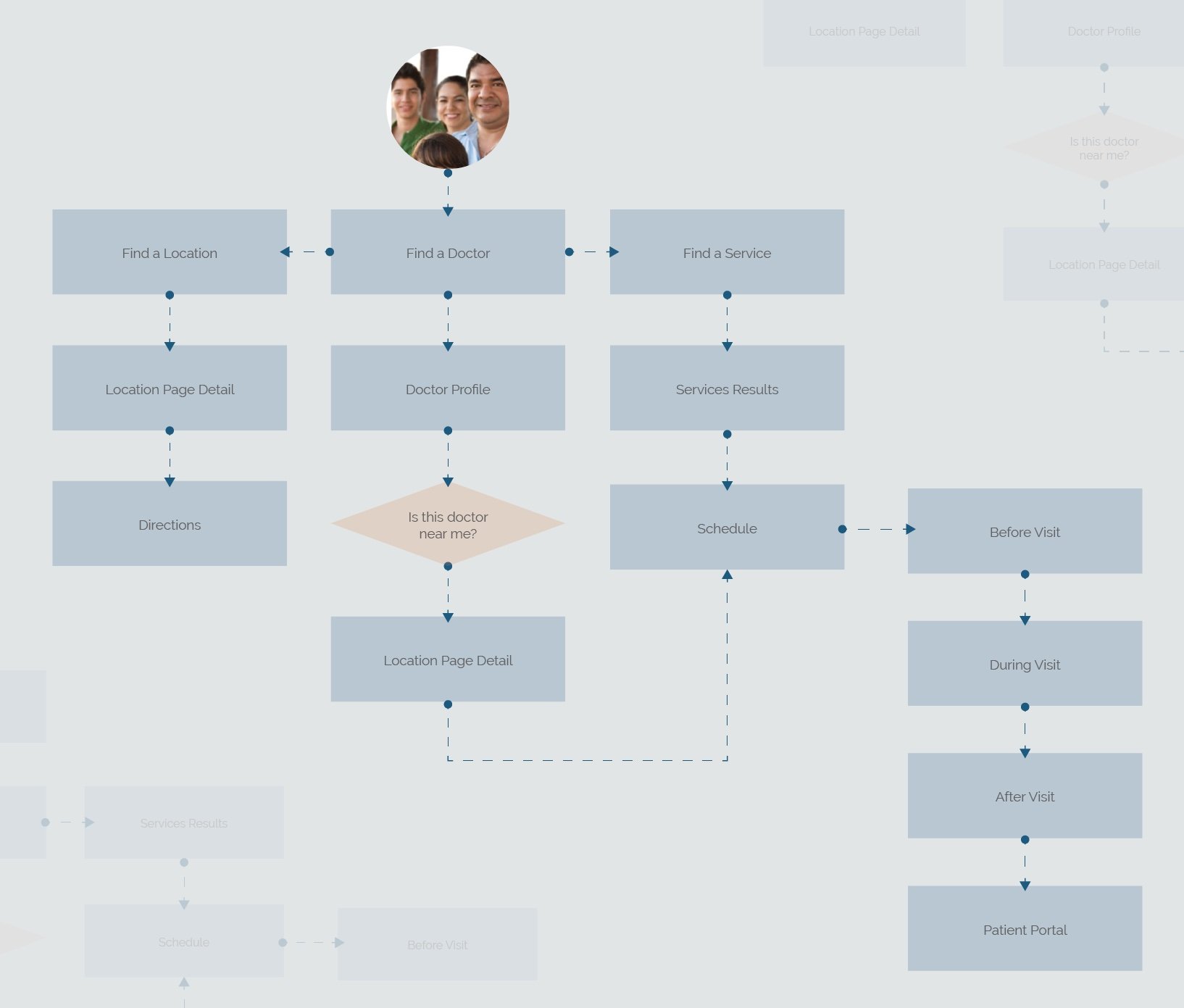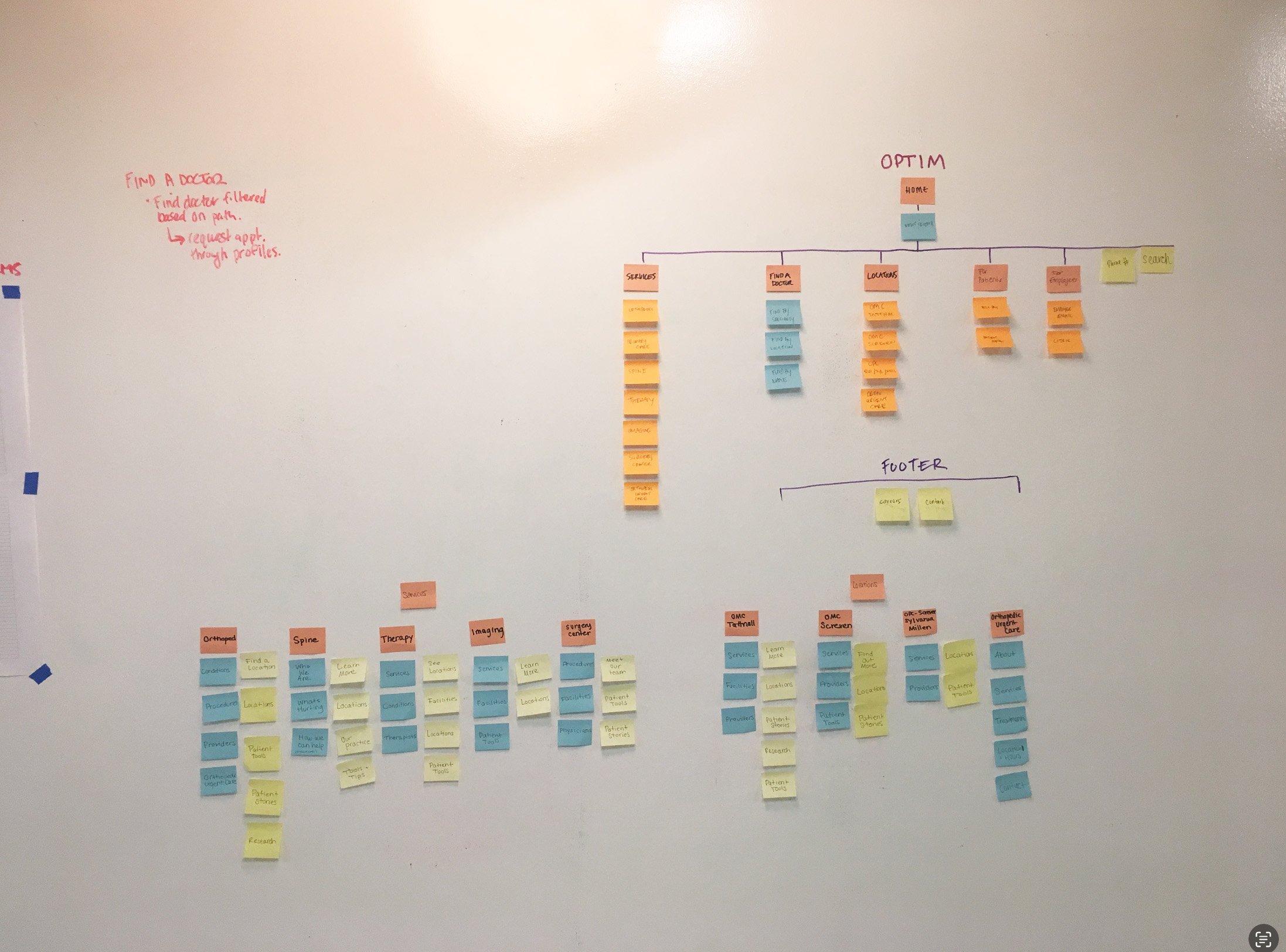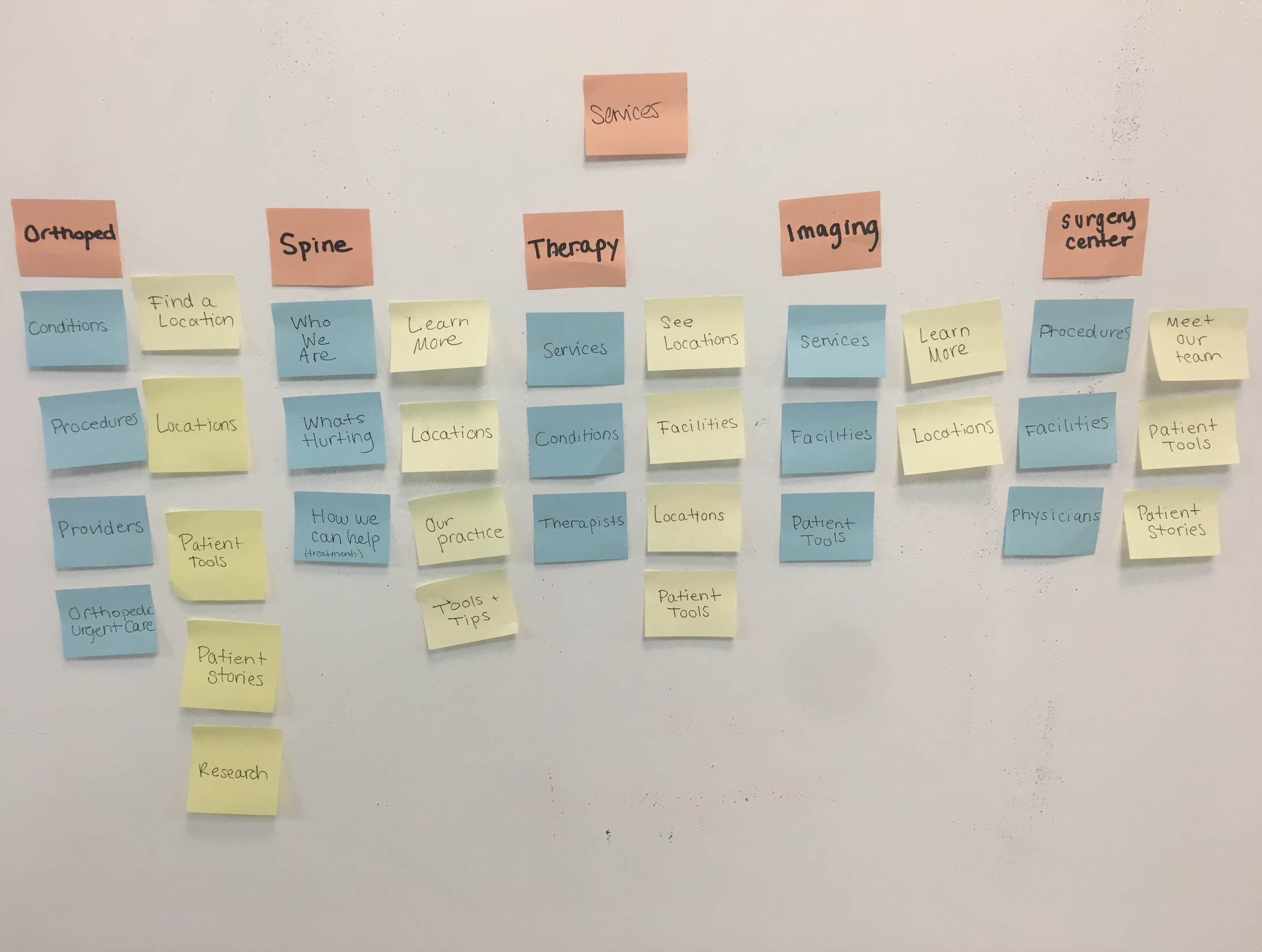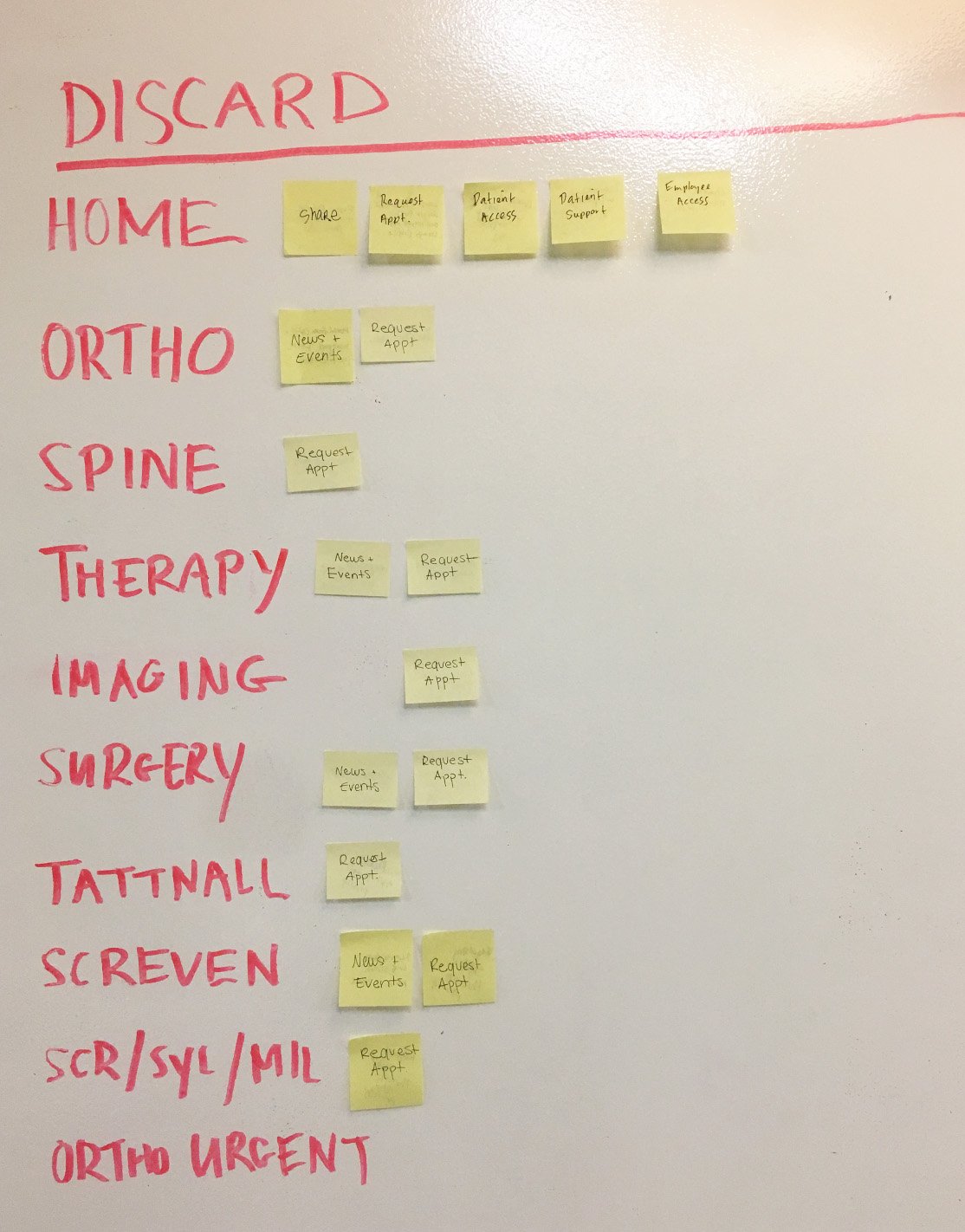Optim Healthcare
Revitalizing User Experience: The Strategic Redesign of Optim Healthcare's Digital Presence for Enhanced Navigation and Increased Conversion.
Overview
In a strategic initiative to enhance online user experience, the Optim Healthcare website underwent a comprehensive redesign focused on user-centric navigation and a structured content flow. Addressing the previous site's convoluted navigation, the project involved in-depth UX research, persona development, and data-driven design decisions, leading to a tailored site that not only reflects the healthcare provider's identity but also facilitates patient engagement.
Optim Healthcare's previous website lacked intuitive structure and flow, making navigation difficult and diminishing the user experience.
Challenge
To overhaul the Optim Healthcare website with a keen focus on user experience, ensuring a logical flow that facilitates easy navigation and ultimately improves conversion rates.
Objective
UX Researcher
Conducted user behavior analysis and usability studies to inform design decisions.
My Role
Information Architect
Reorganized the sitemap to improve navigation and site structure.
Data Analyst
Utilized data insights to optimize conversion paths and main CTAs.
Design Strategist
Developed user personas and journey maps to guide the redesign process.
Team Coordinator
Facilitated daily stand-up meetings and coordinated with team members for project alignment.
Process - Visual Design
Updated the brand's visual guidelines to a contemporary look, initiated by creating multiple style tiles for selection and culminating in a detailed style guide to ensure visual consistency.
Colors
Fonts
Icons
The UX Discovery phase stood as the cornerstone of our design process for the Optim Healthcare website redesign. Our approach was methodical and user-centric, ensuring that the end product not only resonated with the users but also facilitated a seamless experience for them.
Process - UX Discovery
Personas
We began by developing a comprehensive set of personas that encapsulated the diverse demographic that Optim Healthcare serves. These personas were meticulously crafted, incorporating user data, behavioral patterns, and specific healthcare needs to represent the spectrum of users accurately. From the hurried parent seeking urgent care to the elderly patient managing chronic conditions, each persona helped us to empathize with different user segments and anticipate their interactions with the website.
User Flows
Equipped with these personas, we charted detailed user flows to visualize the pathways each persona might take when navigating the site. This process involved mapping out every step of the user journey, from initial contact through to the desired action, whether it was booking an appointment, seeking information on a medical condition, or accessing test results. Our user flows were not only designed to eliminate unnecessary steps and streamline navigation but also to create a comforting and reassuring experience that would foster trust in the Optim Healthcare brand.
Initiated with an in-depth UX research to align the design with user needs, followed by a strategic reduction in the number of site pages from 59 to 30, eliminating redundancies and focusing on user journey optimization.
Process - Site Mapping
Old Site Map
New Site Map
Developed wireframes to establish a clear blueprint for the website's structure, ensuring that each page was purposefully designed with the user journey in mind.
Process - Wireframes
Seamlessly blended the new branding with the wireframe layouts across all pages, with special attention to creating a homepage that features clear, data-backed CTAs for improved user interaction and brand representation.
Process - Final Compositions
The redesign of the Optim Healthcare website yielded transformative results, with a 20% increase in conversion rates signifying the project's success. This improvement was attributed to a more intuitive navigation system and a user-centric design approach, which streamlined user flows and enhanced content accessibility. Feedback highlighted greater user satisfaction, reflecting the effectiveness of reducing the website's pages and refining the information architecture. Moreover, the visual overhaul improved brand consistency across the platform, contributing to a stronger digital presence.
The project not only elevated the user experience but also demonstrated operational efficiencies by reducing redundant inquiries, showcasing the significant impact of aligning UX design with strategic business objectives in a healthcare context.
Results
Increase in conversion rates
Reduction in user navigation time
50%
Decrease in redundant inquiries was observed




